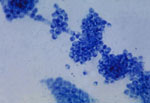Candidiasis is a fungal infection caused by yeasts that belong to the genus Candida. There are over 20 species of Candida yeasts that can cause infection in humans, the most common of which is Candida albicans. Candida yeasts normally live on the skin and mucous membranes without causing infection; however, overgrowth of these organisms can cause symptoms to develop. Symptoms of candidiasis vary depending on the area of the body that is infected.
Candidiasis that develops in the mouth or throat is called “thrush” or oropharyngeal candidiasis. Candidiasis in the vagina is commonly referred to as a “yeast infection.” Invasive candidiasis occurs when Candida species enter the bloodstream and spread throughout the body. Click the links below for more information on the different types of Candida infections.




|
Human Colonic Bacteria ~ Polysaccharides .pdf Size : 1202.761 Kb Type : pdf |


Make a free website with Yola